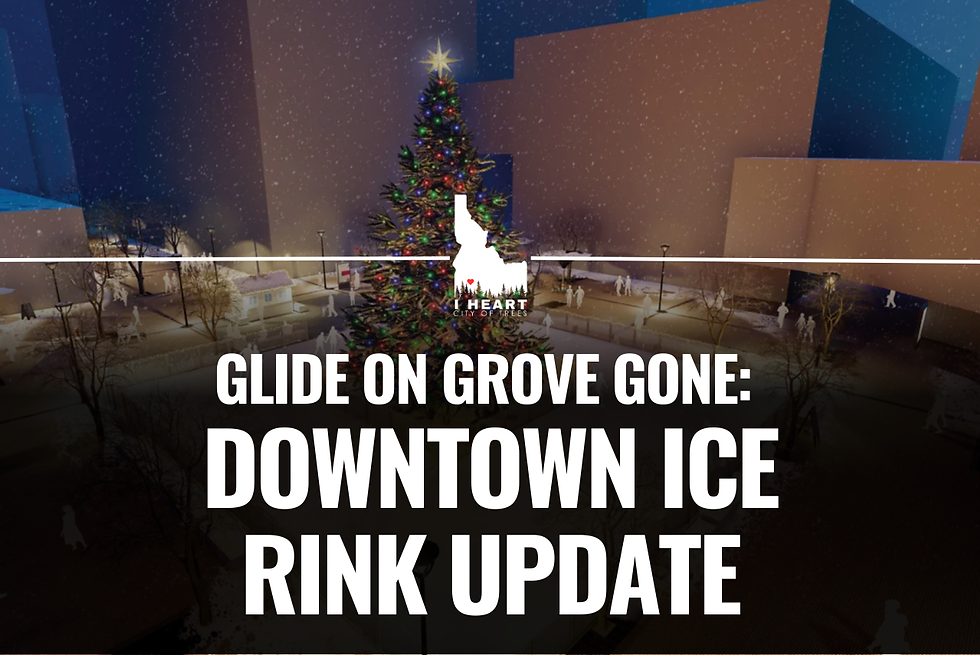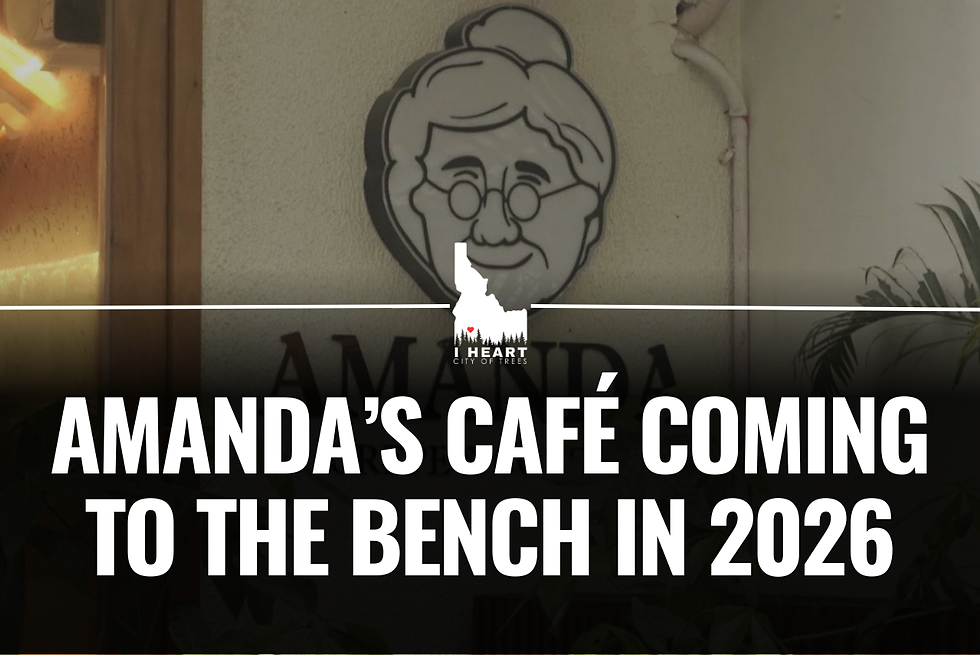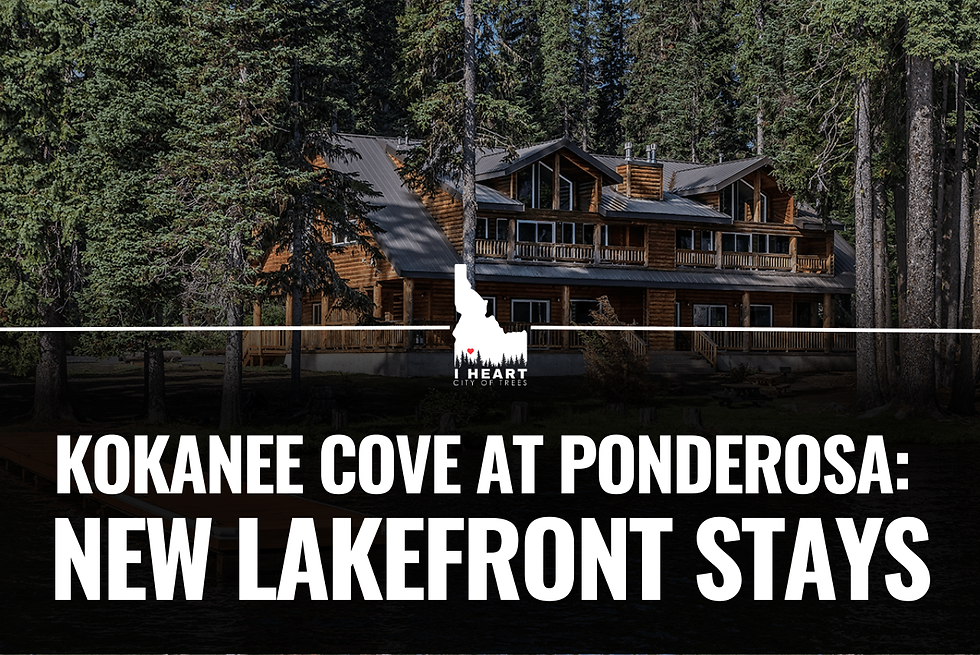Boise Airport Expansion: What It Means for Treasure Valley (Now and in the Future)
- Brent Hanson
- Oct 20
- 8 min read
If you’ve caught a flight out of Boise lately or sat in traffic wondering how the region keeps growing you’ve likely heard that big things are happening at the Boise Airport. The latest: a bold expansion of Concourse A, adding up to 10 new gates in a project that could cost up to $700 million, funded entirely with airport revenue and ticket-based fees (i.e. no local tax dollars). (Idaho News 6 Boise Twin Falls (KIVI))
But beyond the headlines, this development matters deeply to folks in the Treasure Valley and those considering making Idaho home. It’s not just about more flights; it’s about growth, opportunity, and quality of life.
In this post, I’ll walk you through:
Why this expansion is happening now
What changes you can expect (short-term & long-term)
What it means for people living in and moving to Boise / the Treasure Valley
What risks or challenges to watch
How local leaders are managing this
What you can do to stay plugged in
Let’s dive in.
Why Expand the Boise Airport Now?
1. Passenger Growth & Demand
Over the past decade, Idaho and the Treasure Valley in particular has been one of the fastest-growing regions in the U.S. More people moving here means more travel, more business connections, and more pressure on existing infrastructure. Boise Airport (BOI) has seen traffic increases that are creating bottlenecks, especially in peak times.
Simply put: the current gate count is getting strained. Without expansion, delays, crowding, and reduced service options become more likely. Expanding Concourse A helps the airport stay ahead of demand rather than always scrambling to catch up.
2. Strategic Vision & One Chance to Get It Right
Airport and city leaders have stressed: “We only have the opportunity to do Concourse A once.” (Idaho News 6 Boise Twin Falls (KIVI)) That means mistakes will be costly and difficult to fix later. They want to build capacity that’s not just adequate for today, but future-proof (or at least more resilient to future growth).
This is more than tacking on a few gates. It’s a holistic upgrade: baggage systems, utilities, apron/tarmac areas, infrastructure to connect the new gates, and more. (Idaho News 6 Boise Twin Falls (KIVI))
3. Financial Strategy (without burdening local taxpayers)
One of the most compelling parts: none of this is supposed to come from your property tax or city budget. The project is being funded by airport revenues + passenger facility charges (a small fee added to airline tickets). (Idaho News 6 Boise Twin Falls (KIVI))
That strategy reduces friction and opposition: people tend to accept bigger fees on flights more than larger local tax bills. Plus, it gives the airport more financial independence in planning infrastructure.
What’s Changing (and When)
To make sure you can follow along (and maybe get excited about what’s coming), here’s a breakdown of what to expect in phases.
Phase 1: Early Construction & Preparation
New apron (tarmac) being built. This gives planes parking space and supports expansion. (Idaho News 6 Boise Twin Falls (KIVI))
Upgrading baggage systems. Pre-9/11 baggage systems need modernization to support more gates. (Idaho News 6 Boise Twin Falls (KIVI))
New utility plant. A bigger concourse means more heating, cooling, power, water the infrastructure under the hood has to scale. (Idaho News 6 Boise Twin Falls (KIVI))
Rental car center nearing completion. This includes Boise’s largest mural, set to go up in April 2026. (Idaho News 6 Boise Twin Falls (KIVI))
Minimizing impact on travelers. Airport officials say they “aim to expand gates, concessions, and infrastructure with minimal passenger disruption.” (Idaho News 6 Boise Twin Falls (KIVI))
Expect noise, detours, and visual changes around the airport for the next few years. That’s normal for a project of this scale.
Phase 2: Gate / Concourse Build-Out
Once basic infrastructure is in place, work will shift toward building the physical gates, walkways, and connecting infrastructure. This is where travelers will see real difference: new boarding areas, more waiting space, more shops, and more flexibility in routing flights.
The tentative completion date is 2029. (Idaho News 6 Boise Twin Falls (KIVI))
Phase 3: Activation & Ongoing Adjustments
After gates open, there will be a period of fine-tuning: flights rerouted, passenger flow tested, adjustments to utilities, and more. Airport leadership will watch whether the upgrades are hitting targets: fewer delays, more flight options, and better passenger experience.
They’ll also continue expanding concessions (restaurants, shops) and other amenities to make travel more pleasant. (Idaho News 6 Boise Twin Falls (KIVI))
Impacts for Treasure Valley Residents (Now & Later)
1. More Flight Options, Better Connectivity
With more gates, Boise can attract more airlines or routes. That could mean:
More direct flights (fewer layovers)
Lower fares through competition
More flexibility (earlier or later flights)
Better connections for business, leisure travel, or family visits
For people who live in Boise or nearby and fly even occasionally, that’s a big win.
2. Economic Growth & Job Creation
Large infrastructure projects tend to ripple outward. You’ll probably see:
Construction jobs in the short to medium term
Ongoing airport and airline jobs (operations, retail, maintenance)
Indirect boosts to the local economy: more visitors, more businesses considering Boise as a hub, increased demand for hotels, restaurants, etc.
More appeal for businesses considering relocating to Boise (perhaps drawn by better air service)
This helps reinforce the growth momentum we already see in the Treasure Valley.
3. Real Estate & Infrastructure Stress
Growth is rarely all smooth. More flights and travelers mean more demand for roads, parking, transit, and services. If airport expansion encourages additional development around the airport or on the periphery, we might see:
Pressure on roadways near airport access
Increased traffic in neighborhoods bordering airport zones
Demand for public transit or shuttle services
More noise complaints or constraints on residential development close to flight paths
These are things local planners must monitor and manage.
4. Quality of Life Considerations
If airport travel becomes more seamless, living in Boise or near it becomes more attractive for remote workers, retirees, or people wanting both urban access and natural surroundings. But residents will have a vested interest in:
Ensuring the expansion doesn’t degrade local neighborhoods
Preservation of greenspaces, sound buffers, and smart planning
Holding the airport accountable to the “minimal disruption” promise
Risks, Challenges & Things to Watch
With big projects come big potential pitfalls. Here are a few to keep on your radar:
Cost Overruns & Delays
Even well-planned infrastructure projects can run over budget or schedule. Unforeseen engineering issues, supply chain delays, or regulatory hurdles could push timelines out or increase costs beyond $700 million.
Disruption to Travelers
Despite promises to minimize passenger disruption, there will inevitably be times when gates shift, areas close, or routes are adjusted. These transitions can be frustrating to flyers if not communicated well.
Environmental & Community Concerns
Expansions at airports can raise concerns around:
Noise pollution
Air quality
Land use conflicts
Impact on adjacent neighborhoods
Transparency and mitigation will be key.
Managing Demand & Growth
What if the expansion accelerates growth so much that even 10 new gates become insufficient after a few years? Planners will need to keep a long horizon perspective: what’s next after Concourse A?
How Local Leaders Are Positioning This
From what public statements and reporting show:
Selective contractor choice: The City of Boise picked Hensel Phelps as the lead contractor (out of 7 applicants), focusing on experience, not cheapest bid. (Idaho News 6 Boise Twin Falls (KIVI))
“Once chance” mentality: Officials repeatedly emphasize that Concourse A needs to be done right the first time. (Idaho News 6 Boise Twin Falls (KIVI))
No burden on local taxpayers: Funding is from airport revenue and passenger fees. (Idaho News 6 Boise Twin Falls (KIVI))
Public visibility & branding: Think of the mural in 2026, signage, and the aesthetic elements. They want this to feel like a Boise “gateway” that makes an impression. (Idaho News 6 Boise Twin Falls (KIVI))
Communication & transparency: Officials publicly commit to minimizing disruption and keeping the public in the loop.
That said, the real test will come when schedules slip, complaints arise, or tough tradeoffs (cost vs convenience vs neighborhood impact) must be made.
What This Means if You’re Thinking of Moving to Boise / Treasure Valley
If you’re eyeing Idaho as your next home, here’s how this airport expansion factors in:
Positives
Better travel options — More gates means more airlines, more routes, more competition
Growing economy — Strong infrastructure helps attract new businesses, jobs, and investment
Quality of life boost — Being in a place with a modern, efficient airport adds to convenience and attractiveness
Future flexibility — The region is showing it’s serious about scaling with growth
Things to Ask / Research
How will traffic patterns near the airport evolve? If you live in neighborhoods near flight paths, what are the noise mitigation plans?
Will public transit or road upgrades accompany the expansion to prevent congestion?
Can your job, remote flexibility, or lifestyle absorb occasional construction disruption in your early years of living here?
Will the expansion push further growth outward (sprawl) or inward (densification)?
Tips to Stay Ahead
Keep an eye on airport master plans, public meetings, and city planning documents
Get involved in neighborhood or city advisory boards
When house hunting, consider airport closure times, noise contours, and flight paths
Follow local news and trusted community accounts for timely updates
Your Role as a Community Member / Traveler
You don’t just watch big projects happen. Your voice, behavior, and choices influence how well this turns out. Here are ways to stay engaged:
Attend public hearings or open houses about airport expansion
Speak up if you live near impacted zones ask questions about noise mitigation, landscaping, design
Share feedback when airport or city posts updates
Observe how the project is progressing and hold leadership to their “minimal disruption” promise
Support local businesses in Boise Airport’s concession spaces keeping local flavor will help the airport’s identity
Timeline Recap & What to Expect When
Timeframe | Major Activities | Traveler / Resident Experience |
Now – 2025 | Apron & utilities work, initial infrastructure prep, rental car center wrap-up | Construction zones, detours, signage changes |
2025 – 2028 | Gate / concourse construction, utility hook-ups, interior build-out | Intermittent gate reassignments, shifting pathways |
2028 – 2029+ | Gate activation, testing, adjustments, opening phases | Smooth transition to new flights, growing route options |
Beyond 2029 | Ongoing enhancements, monitoring, future expansions | Continued growth, better service, potential for even more expansion |
Final Thoughts & Takeaway
The Concourse A expansion at Boise Airport is more than a construction project. It’s a signal: Boise is planning for growth, aiming to boost its connectivity and livability, and willing to invest in infrastructure that scales with demand. For Treasure Valley locals and prospective newcomers alike, it offers promising upside if managed well.
Yes, there will be bumps along the way. Delays, noise, shifting gate assignments, and community complaints are all part of large projects. But the upside is substantial: smoother travel, more routes, and a stronger regional economy.
As this unfolds, staying informed and engaged will be key. You’ll want to know when gates open, when flight patterns change, and how neighborhood impacts are handled.
If you want ongoing, timely updates (construction milestones, new route announcements, local reactions, community meetings), you’ll want to follow a reliable source.
Follow @iHeartCityOfTrees to get breaking local news, in-depth coverage, and stories that connect you to the heart of Boise and the Treasure Valley. You're part of this growth let’s watch it together.




Comments